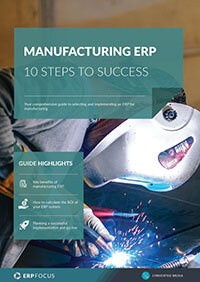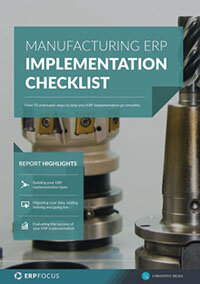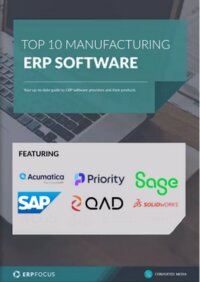Manufacturing ERP: the saviour of your procurement risk management
Enterprise risk management is a discipline that originated with Sarbanes–Oxley after 2002. Businesses are required to identify risks and to identify ways to avoid them, reduce them, or share and minimize them. If none of these are possible, the final action might be to accept the risk. Regardless, the choice would be conscientiously made.
Sources of potential risk
The procurement of materials for production or for assets has always been a source of risk. Manufacturing ERP and enterprise risk management are two tools we can use together to minimize the potential cost of any risk. Let's take a look at potential risks a business developing a new product might want to manage.
- Our ERP suggests we need to buy a new part for the first time.
- Is it the right part? Have our engineers fully defined the requirements?
- Where should we procure this part? Can we use an existing supplier or do we need to identify a new supplier?
- How much will the part cost? How does that cost fit in with our planned cost for the product?
Recommended reading: manufacturing ERP failure - 6 common causes
Our part is a small plastic item. The cost per piece is low and the minimum order is 5,000. Our ERP suggests we buy 50,000, or eight weeks’ requirements. Our first demand is 200 in three weeks and the lead time is one week. The engineers are sure the part will work but we have no experience with the particular plastic compounds and rely on assumptions that standard adhesives will work.
Risk management processes
ERP will help us to look at possible enterprise risk management actions. We might reduce the risk by ordering only the minimum quantity our ERP has determined. If it works, we can still order the remainder to meet demand and the only cost is the second PO. If it doesn’t work, we will scrap a smaller amount.
With the correct configuration and accurate data input, your manufacturing ERP should be able to support your enterprise risk management processes.
ERP product development processes might also lead us to an alternative risk management action. We might order the minimum quantity of a different plastic compound that we already have experience with, one for which we know our adhesive will work. Alternatively, we could accept that the engineer's assertion is probably accurate and the total cost of 50,000 pieces is low enough to accept the risk, allowing us to place the planned order with no modification.
With the correct configuration and accurate data input, your manufacturing ERP should be able to support your enterprise risk management processes. If we choose to reduce or avoid the risk, ERP will plan new orders for the remaining quantity. At the same time, the system will allow us to quantify the risk and document the steps we take based on the risk.
Free white paper
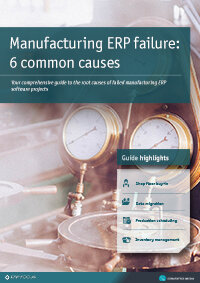
Manufacturing ERP Failure: 6 Common Causes
Get your comprehensive guide to the causes of manufacturing ERP failure
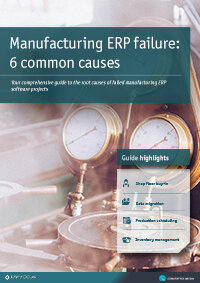
Featured white papers
Related articles
-

ERP for make-to-order manufacturing
How can ERP help your make-to-order manufacturing business thrive?
-

Secret KPI: Why Your ERP Implementation Team Matters More Than Software
Learn how Godlan ensures successful ERP implementation for manufacturers with proven strategies &...
-

Shop floor management: 4 ways ERP can improve efficiency
Learn about the shop floor efficiencies that can be realized through the implementation of manufa...


